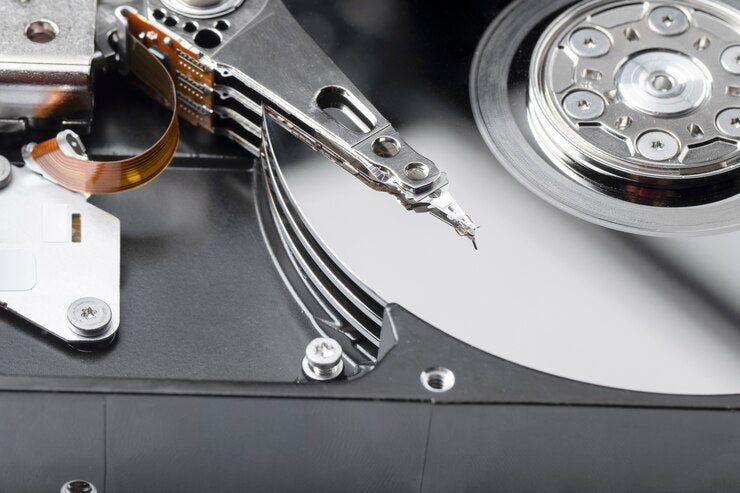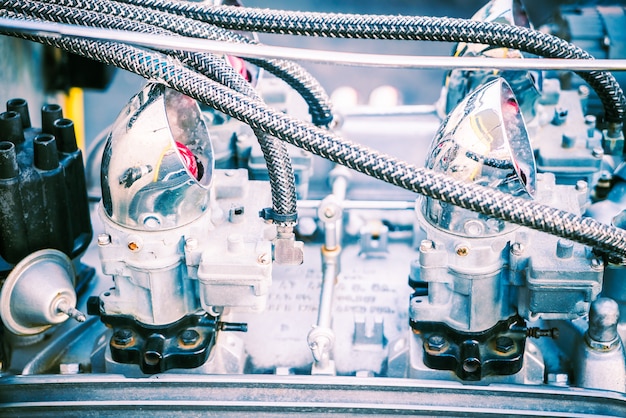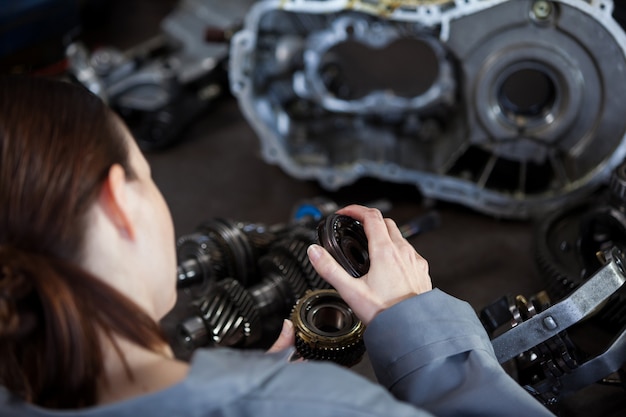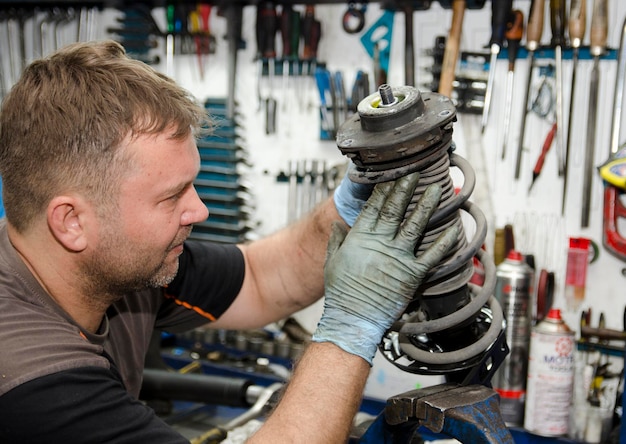
What To Know Before You Use an Ultrasonic Cleaner on Car Parts
Share
Can't achieve a deep clean through traditional cleaning methods and home-mixed solutions? It is time to buy an ultrasonic cleaner for car parts.
With the global ultrasonic cleaning market valued at $1.49 billion in 2022 and expected to grow by 6.8% annually, it's clear that ultrasonic cleaning is achieving a new high, especially in industries like automotive and electronics.
Traditional cleaning methods are quite time-consuming because automotive car parts are made from different materials that gather surface contaminants. Hours of scrubbing and cleaning are a thing of the past now.
An ultrasonic cleaner for car parts is a favored solution for cleaning dirt, oil, and grime from a range of materials within minutes. Before you work the magic of ultrasonic cleaning for every material, there are a few considerations. Let's jump in to learn more!
Understanding Ultrasonic Cleaning Technology
The commendable ability of ultrasonic cleaners to clean challenging-to-reach areas makes them the masters of modern cleaning practices. Cleaning those tricky spots with numerous scrubbers or sprays just doesn't get us a deep clean.
An ultrasonic cleaner for car parts relies on a cavitation process where high-frequency sound waves create tiny bubbles in a liquid solution or water. These bubbles burst to generate microscopic energy waves that loosen the dirt, dissolve grime, and remove debris from surfaces.
Think about cleaning carburetors, brake components, and even fuel injectors that have numerous crevices. Simple brushing isn't going to provide a deep clean, and vigorous scrubbing might just damage a component. What's the solution?
An automotive parts washer such as Sonic Soak's ultrasonic cleaner can remove grime from the small channels inside a carburetor, saving you time and energy.
Don't underestimate this compact cleaner— use it for engine blocks and cylinder heads to power through thick oil, grease, and carbon buildup in even the hardest-to-reach crevices.
Did You Know?
Most ultrasonic cleaners now come with adjustable frequencies to clean different materials and alloys, which works wonders for car parts that have surface coatings. This adjustability makes ultrasonic cleaners highly versatile.
-
High Frequency Use
You can use a high-frequency ultrasonic cleaner for car parts such as fuel injectors, sensors, turbocharger components, and throttle bodies. High frequencies of up to 40 kHz create smaller bubbles, which are gentle and less abrasive.
-
Low-Frequency Use
For delicate automotive car parts, you can use a low-frequency cleaner gun with 20 kHz that produces stronger cavitation to remove heavy contaminants and grime.
Low-frequency ultrasonic cleaning provides stronger cavitation, which works well for sturdy car parts such as engine blocks and heads, carburetors, brake pads, metal exhaust components, etc.
Benefits of Using Ultrasonic Cleaners for Car Parts
The unmatched efficiency and precision of ultrasonic cleaning definitely beats traditional methods.
There are numerous reasons why an ultrasonic automotive parts cleaner is the preferred choice when it comes to cleaning solutions.
1. Deep Reach for Dirt Removal
Imagine a million micro-scrubbers. Yes, the high-frequency sound waves generate literally a million tiny bubbles that work as scrubbers when they implode to dislodge dirt and grime.
Automotive parts such as carburetors, brake calipers, and fuel injectors benefit from precision cleaning as the cavitation process cleans every crevice.
This technology gives an ultrasonic cleaner an edge over most traditional cleaning methods, such as scrubbing or spraying with a cleaning gun.
2. Cleans a Range of Parts
An ultrasonic cleaner for car parts goes beyond standard cleaning—handling everything from engine blocks to tiny screws. Removing carbon deposits, grease, and oil isn't a tedious task with ultrasonic cleaning. You can clean carbon-filled carburetors, blocked exhausts, and even cylinders within 3-5 minutes!
Not only is it ideal for automotive use, but it's also a top choice in the marine industry for inboard and outboard motors, thanks to its gentle cleaning on aluminum parts, which helps reduce future corrosion risks.

3. Safe for Delicate Components
Cleaning doesn't have to result in damaged parts anymore. With an ultrasonic cleaner, you can clean small and delicate parts such as sensors, wiring connectors, and electronic components.
You also don't have to worry about corrosion and scratches because ultrasonic cleaners for car parts use high-frequency cleaning that's gentle enough for sensitive items and doesn't result in any damage. No more costly repairs and brand-new shine, all thanks to the ultrasonic cleaning technology.
4. Environmentally Friendly
Unlike many old-school cleaning methods, ultrasonic cleaners lean green, using biodegradable solutions that are as kind to the planet as they are tough on grime.
This eco-friendly approach isn't just a trend; it's helping businesses meet sustainability goals while keeping regulators happy. Plus, ultrasonic cleaners save water—way less than those typical automotive parts washers that gulp it down.
And let's be real: who wouldn't want a cleaning method that's tough on dirt but goes easy on Mother Earth? With fewer harsh chemicals, ultrasonic cleaning is like getting your parts squeaky clean without giving the environment a cold shoulder.
5. Cost and Time Efficient
We can never doubt the efficiency of ultrasonic cleaners as they cut down the cleaning time significantly. It is also a cost-efficient solution for cleaning numerous parts with different materials.
Traditional cleaning requires a combination of solutions to clean alloys, steels, and other materials. With an ultrasonic cleaner for car parts, you can clean a variety of materials in a very short time, which saves you money and time.
Types of Car Parts Suitable for Ultrasonic Cleaning
An ultrasonic cleaner for car parts isn't just another tool; it's a powerful ally for deep-cleaning a variety of automotive components.
From carburetors to delicate sensors, let's break down which car parts get the most out of ultrasonic cleaning and why.
Carburetors and Fuel Injectors
A carburetor is like the chef of your engine—it mixes a blend of fuel and air to keep things running smoothly. Think of it as the muffin batter whisk, except it's whipping up horsepower instead of breakfast.
Its complex parts work together to keep your vehicle on the road. The tiny channels end up getting stubborn carbon deposits. Removing them can restore function.
Fuel injectors also require proper cleaning to maximize the fuel efficiency. Sonic Soak ultrasonic cleaner quickly dissolves stubborn carbon deposits, dirt, and other impurities, restoring the optimal function of these automotive parts, which is great news for performance.
Cylinder Heads and Engine Blocks
For big parts like cylinder heads and engine blocks, an ultrasonic cleaner for car parts is ideal for stripping away layers of grease, oil, and dirt that standard methods can't touch.
Even if a cleaning gun blasts surface dirt, it won't reach those deep crevices. Ultrasonic waves reach those hidden spots, giving the automotive parts a spotless clean without disassembly.
Sensors and Electronic Components
Small, sensitive parts like oxygen sensors and wiring connectors need gentle handling. The best ultrasonic cleaner uses high frequencies to delicately scrub the dirt away, keeping electronics intact and ready for peak performance.
Nuts, Bolts, and Screws
Even the smallest parts matter. These fasteners hold it all together but accumulate grime fast. An automotive parts washer cleans a batch in one go, saving time and giving parts a new shine.
You can clean numerous nuts, bolts, and screws in a single wash cycle by using a Sonic Soak ultrasonic automotive parts washer in four simple steps.
1. Fill the Container: Add water and a few drops of degreasing solution or dishwashing liquid to the Sonic Soak container for a thorough cleaning.
2. Add Your Nuts, Bolts, and Screws: Place all the nuts, bolts, and screws in the container, making sure they're fully submerged. You can clean a batch in one cycle!
3. Plug in the Sonic Soak: Connect the cleaner to a wall outlet, place the Sonic Soak device in the water, and turn it on.
4. Run for 5–10 Minutes: Let the cavitation action break down grime and oil for about 5 to 10 minutes, then remove the parts and dry them off for a shiny, clean finish.
Preparing Your Car Parts for Ultrasonic Cleaning
Proper prep of car parts helps you get that deep, effective clean without any surprises. Here's what to know before dropping those parts in.
Step 1: Remove Loose Debris First
A quick pre-clean helps.
Brush off loose dirt, grease, and grime to avoid dirtying up the cleaning solution too fast. For heavily soiled parts, use a cleaning gun or a light rinse. This simple step prevents large particles from reducing the ultrasonic cleaner's efficiency and keeps your solution fresh longer.
Step 2: Disassemble Parts Where Possible
Separate parts that can come apart, like carburetor pieces or bolts from brackets. This gives the ultrasonic cleaner full access to each surface, especially for complex shapes with deep grooves or channels.
For smaller components like screws and fasteners, putting them in a basket or mesh container within the cleaner can make handling easier while keeping everything intact.
Step 3: Choose the Right Solution
Automotive parts are made from different materials. Steel, copper, aluminum, or plastic require different solutions. Your best choice of solution is a biodegradable liquid for gentle cleaning. It won't corrode the metals and get the contaminants off quite easily.
Step 4: Set the Correct Temperature and Frequency
For delicate parts like sensors, use a lower frequency to avoid any potential damage. Heavier components like engine blocks can handle powerful cleaning settings.
For best cleaning, 50-65°C works well. The best ultrasonic cleaner models also offer adjustable frequency and temperature settings.
Choosing the Right Cleaning Solution
What is the right cleaning solution? Different automotive car parts require different solutions to target dirt, oil, grease, and other contaminants.
Here are a range of solutions to ultrasonically clean automotive parts.
Degreasing Solution for Oil and Grease
Numerous automotive car parts, such as engine blocks or cylinder heads, are covered in thick oils and grease. To restore function, you really need to get the grease out.
Degreasing solutions can work wonders when you pair them up with the best ultrasonic cleaner for car parts. These solutions not only break down oil but also lift away residues when you use them with an ultrasonic cleaner.
The cavitation process works its magic to penetrate the deepest crevices and grooves while the degreasers dissolve thick contaminants, working well with an automotive parts washer.
Mild Detergents for Sensitive Parts
Delicate parts such as sensors, connectors, or other small electronics can benefit from mild solutions. You don't want to use harsh abrasive chemicals here as it could damage the sensitive components.
Instead, use a few drops of a dishwashing liquid in warm water and work around with an ultrasonic cleaner to get the oil and dirt out.
The best ultrasonic cleaner can use high-frequency waves to scrub delicate parts without damaging any surfaces. It's also quite ideal for different materials such as aluminum, copper, steel, and more without harming any surfaces.
Rust and Grime Removers for Tough Buildup
For parts with stubborn rust or grime—think bolts, screws, or those older components that look like they've survived a thousand road trips—a rust-removing solution is your best friend.
These formulas go after rust like a dog with a bone, breaking down even the most stubborn buildup in those hard-to-reach nooks. Just be careful not to use them on aluminum parts unless you're planning to recreate a science experiment in corrosion!
A cleaning gun can help knock off loose debris for a quick start, but let's be real—nothing beats the power of ultrasonic cavitation to fully evict every last speck of rust.
Take a quick look at the cleaning solutions and what they're best for.
|
Cleaning Solution |
Best for |
Ultrasonic Cleaner Compatibility |
Caution |
|
1.Degreasing Solution |
Oil and grease on engine blocks, cylinder heads, and heavily soiled parts |
Works exceptionally well as it penetrates deeply into greasy parts |
Avoid on sensitive components as it may damage delicate parts |
|
2.Mild Detergent |
Sensitive parts like sensors, connectors, and small electronics |
Ideal with high-frequency settings for gentle scrubbing |
Avoid harsh chemicals, only use mild, non-corrosive detergents |
|
3.Rust and Grime Remover |
Rusty bolts, screws, older components with heavy grime |
Highly effective, cavitation dislodges tough grime and rust |
Do not use on aluminum parts, as it may cause corrosion |
Safety Precautions When Using Ultrasonic Cleaners
Using an ultrasonic cleaner for car parts is a powerful way to deep clean different materials, but following safety precautions should be your top priority.
Here are some safety precautions.
- Ultrasonic cleaning can sometimes release fine mists and high-frequency sounds. You should put on gloves, goggles, and ear protection.
- Make sure to select a cleaning solution that won't react negatively with the materials in the car parts. Strong degreasers work well on metal components, but gentler solutions are safer for plastic or sensitive electronics.
- If you're cleaning all the parts in one go, you should limit the cleaning cycle to the recommended time. This prevents the ultrasonic cleaner from heating up during use. The cool-down time also extends the lifespan of your device.
- Always use your automotive parts cleaner in a well-ventilated area. Some cleaning agents, such as abrasive solutions, may release fumes during the cleaning process, so good airflow prevents inhalation of any harmful vapors.
- Place smaller parts like nuts, bolts, and screws in a basket to keep them secure. Loose parts moving around in the cleaner can get damaged or cause issues with the device itself, so keep everything contained for a safe, effective clean.
Common Mistakes To Avoid With Ultrasonic Cleaning
Don't let a few rookie moves turn your cleaning session into a splashy mess. And let's not forget about missing a screw or bolt here and there. Sometimes, avoiding common mistakes saves us from a lot of trouble.
1. Overloading the Cleaner
Filling the automotive parts cleaner with too many parts at once reduces cleaning efficiency. Each item needs enough space to let ultrasonic waves reach every surface. Overloading will leave spots dirty and defeat the purpose of a thorough and deep clean.
2. Using the Wrong Cleaning Solution
Using just any cleaner or mixing solutions seems harmless, right? Now, imagine using a corrosive solution on metallic parts.
Suddenly, you're not just cleaning—you're unknowingly turning the important components into melted candles!
Let's not make this common mistake. Instead, always choose a solution compatible with your automotive parts washer.
3.Skipping Pre-Cleaning Steps
Throwing heavily greased or muddy parts straight into the ultrasonic cleaner might overload the solution. A quick rinse or a blast with a cleaning gun first helps maintain the solution's effectiveness longer, giving better results.
When To Seek Professional Help for Car Part Cleaning
Sometimes, an ultrasonic cleaner for car parts isn’t enough. If you're dealing with extremely large or complex parts, like full engine blocks or delicate electronic components, it might be time to call in the pros.
Professionals use industrial-grade machines with higher power and precision settings, which can handle parts your cleaning methods can't reach.
Also, if a part has heavy rust, professional cleaners can clean everything and assemble the parts correctly. Because let's be real—if you don't reassemble it just right, that carburetor might turn into a clunker's rattle machine or worse, the engine could sound like it's auditioning for a rock concert.
Proper reassembly keeps things running smoothly, saving you from that "mystery clunk" every time you hit the gas!
Wrapping Up
Professional-grade ultrasonic cleaners for car parts can save you quite a bit of trouble. Mixing up about ten solutions and using about a hundred cleaning cloths isn't getting us anywhere with that stubborn grime and thick grease in the car parts.
Using the best ultrasonic cleaner, such as Sonic Soak, not only dissolves the grease but also removes all the residual grime. Gear up, clean smart, and get that engine running and bolts all rust-free with an ultrasonic cleaner for car parts!






